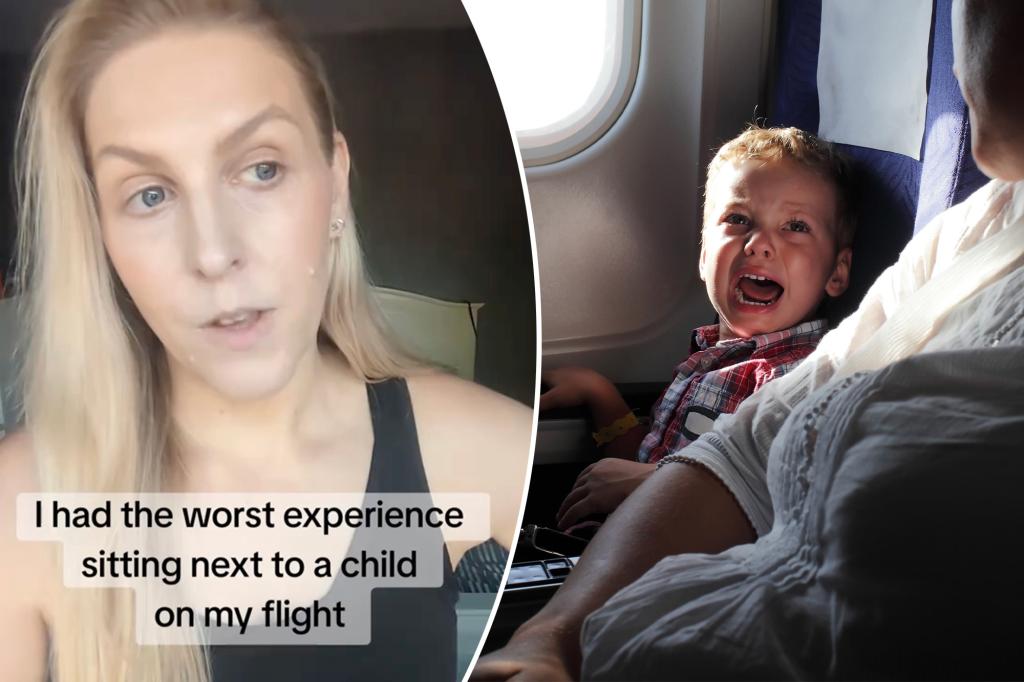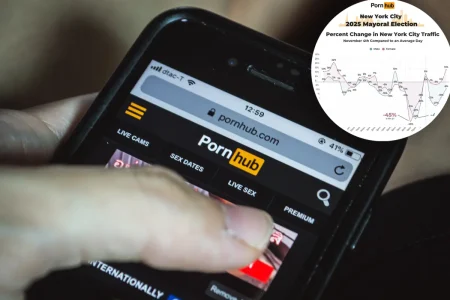When a Toddler’s Flight Antics Sparked an Online Debate
In the age of social media, everyday encounters can quickly transform into viral discussions about parenting, public behavior, and societal expectations. Such was the case when a TikTok user known as “Pale and Interesting” shared her frustrating experience with a toddler on a recent flight. The video captured a common travel scenario—a restless child and a seemingly overwhelmed parent—but it resonated with thousands, igniting passionate responses from viewers on both sides of the parenting debate. While some rallied behind the frustrated passenger, others defended the mother, highlighting the complexities of traveling with young children and the impossibility of judging a family based on a brief glimpse into their lives.
The incident began routinely enough on what should have been an ordinary flight. According to “Pale and Interesting,” who identified herself as a mother, a toddler she referred to as “Spencer” began exhibiting disruptive behavior shortly after takeoff. The child reportedly kicked the seat in front of him, repeatedly slammed the tray table, and eventually escalated to physical contact with nearby passengers, including tapping the TikTokker’s arm and nearly headbutting her while standing on his seat. What particularly frustrated the TikTok user wasn’t just the child’s behavior—which many would agree is relatively normal for a toddler in a confined space—but what she perceived as the mother’s inadequate response. Despite the escalating situation, the TikTokker claimed the mother made minimal attempts to redirect her child, failing to provide toys or other distractions that might have kept him occupied during the flight. When the child spilled yogurt on his seat and began playing with it, the situation reached a breaking point for the frustrated passenger, who eventually tried to intervene herself to calm the child.
The video struck a chord with many viewers who had experienced similar situations while traveling. Comments flooded in from people who believed the incident represented a clear case of parental negligence, with one viewer bluntly stating it was “just sh-t parenting plain and simple.” These commenters focused on the responsibility parents have to prepare for challenging situations like air travel, bringing appropriate distractions and actively managing their children’s behavior in confined public spaces. They argued that while children naturally test boundaries, parents have an obligation to set and enforce those boundaries, especially when their child’s behavior impacts others. This perspective reflects a broader societal expectation that parents should be the primary regulators of their children’s behavior in public, with some even suggesting that unprepared parents should reconsider travel plans until their children are older or better able to handle such environments.
However, the video also attracted passionate defenders of the mother, who offered alternative interpretations of the situation. Some pointed out that a single flight represents just a tiny fraction of a family’s life, making it impossible to fairly judge their overall parenting approach. “You bunch of judgmental busybodies!!! You witnessed a couple of hours out of their life!!” exclaimed one commenter, capturing the sentiment of many who felt the criticism was excessive. Others suggested that travelers without children often fail to appreciate the immense challenges of parenting in public, particularly in stressful environments like airplanes where children’s normal behaviors—movement, noise, emotional expression—suddenly become problematic. These commenters emphasized that children are still developing impulse control and emotional regulation, making perfect behavior an unrealistic expectation. Some even questioned whether the TikTokker’s account was entirely accurate, noting that the stresses of travel might have colored her perception of both the child’s behavior and the mother’s response.
The incident transcended this specific flight to highlight broader societal tensions about children in public spaces. In recent years, debates have intensified around “child-free” zones in restaurants, airlines, and other public venues, reflecting a growing intolerance for the natural behaviors of children. Parents increasingly report feeling judged and unwelcome in spaces that were once considered family-friendly, creating additional stress in already challenging situations. At the same time, many adults without children feel their right to peaceful enjoyment of public spaces is frequently compromised by parents who seem unwilling or unable to manage their children’s behavior. The viral nature of this particular TikTok exemplifies how these tensions play out in the court of public opinion, where strangers feel entitled to evaluate parenting decisions based on limited information. Whether the mother in question was truly negligent or simply having an exceptionally difficult day remains unknown—a nuance often lost in the black-and-white world of social media judgment.
Perhaps what makes this story so compelling is how it touches on universal human experiences: the frustration of dealing with disruptive behavior, the challenges of parenting in public, and the complex social negotiations that occur in shared spaces. While “Pale and Interesting” and young “Spencer” may never cross paths again, their brief encounter has prompted thousands to reflect on their own expectations of public behavior and parenting responsibilities. In an increasingly connected yet polarized world, such everyday incidents become magnifying glasses for examining our values, boundaries, and capacity for empathy. The next time we find ourselves frustrated by a child’s behavior in public—or feeling judged for our own child’s actions—we might remember this viral moment and consider the full humanity of everyone involved, beyond the snippet we observe in passing. After all, we’re all just trying to navigate our shared spaces with some measure of peace, understanding, and compassion—even at 30,000 feet.















